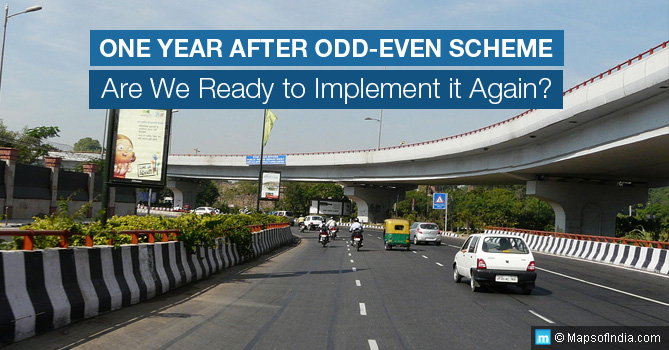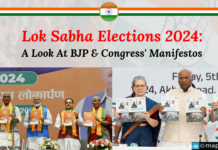 Grandiose plans without adequate planning and public support never really take off. Let’s take the example of Akbar, who tried to build Fatehpur Sikri near Agra as the capital of the Mughal Empire but failed due to lack of adequate water in the region. After 13 years of living there, he shifted back to Agra. Tughlaq tried a similar move to build Tughlakabad as the new capital, only to abandon it later. And more recently, Prime Minister Narendra Modi has learnt the hard way with demonetisation making no clear headway and failing miserably to achieve the stated fiscal objectives. So when Delhi’s Chief Minister Arvind Kejriwal decided to launch the odd-even scheme on alternate days for private cars in Delhi in a bid to reduce pollution, it should have resulted in clear and unambiguous gains, but did it? What’s common in all the above instances of grand ambition is that they were the result of one leader’s big vision that was implemented without seeking expert opinion or adequate planning. And that’s why they all failed. To be fair, Arvind Kejriwal is not really part of the above examples since his scheme was a result of adequate feedback and suggestions from many transportation experts, social activists and people, who had been advocating over the years to introduce the odd-even scheme and encourage car-pooling as a measure for reducing pollution in the state capital.
Grandiose plans without adequate planning and public support never really take off. Let’s take the example of Akbar, who tried to build Fatehpur Sikri near Agra as the capital of the Mughal Empire but failed due to lack of adequate water in the region. After 13 years of living there, he shifted back to Agra. Tughlaq tried a similar move to build Tughlakabad as the new capital, only to abandon it later. And more recently, Prime Minister Narendra Modi has learnt the hard way with demonetisation making no clear headway and failing miserably to achieve the stated fiscal objectives. So when Delhi’s Chief Minister Arvind Kejriwal decided to launch the odd-even scheme on alternate days for private cars in Delhi in a bid to reduce pollution, it should have resulted in clear and unambiguous gains, but did it? What’s common in all the above instances of grand ambition is that they were the result of one leader’s big vision that was implemented without seeking expert opinion or adequate planning. And that’s why they all failed. To be fair, Arvind Kejriwal is not really part of the above examples since his scheme was a result of adequate feedback and suggestions from many transportation experts, social activists and people, who had been advocating over the years to introduce the odd-even scheme and encourage car-pooling as a measure for reducing pollution in the state capital.
The nay-sayers let the capital down
The odd-even scheme is by no means a first and has been tried out in other international capitals over the years with mixed success. So why hasn’t Kejriwal’s scheme been extended beyond the trial periods last and this year, despite having got a thumbs-up from people in general? The answer to that lies in politics and media’s increasing role in building public opinion either for or against policy initiatives. Arvind Kejriwal has been caught up in an existential political battle with the BJP-led central government on one side and the erstwhile Lieutenant Governor of Delhi on the other. Both of which have been out to undermine his policy initiatives including the odd and even car scheme. Delhi has been a major victim of air pollution that has recently been reaching dangerous levels. So much so, that foreign embassies and international organisations too have raised serious concerns over the deteriorating quality of air over the capital. Striking a discordant note has been a partisan media, which of late has been showing a rather unsavoury tendency for toeing the central government line on major policy initiatives. The media has outdone Doordarshan in serving as an extension of the government’s voice when it came to demonetisation, exhibiting hyper-nationalism over public statements and opinions, and following the government’s cue on most centrally-sponsored initiatives. The same media has gone against supporting Kejriwal’s initiatives by exaggerating problems people were facing due to the introduction of the scheme. Never mind that the scheme only extended for 15 days and had the approval of most people. Pollution is something that directly affects our health and those of our children and yet the media chose to back the government’s unstated position that the public was being inconvenienced by the scheme. What’s more, even the Delhi High Court spoke out against the scheme. So has the odd-even scheme really been a failure or is it just a victim of centre-state politics? The latter seems to be the case.
What Else Went Wrong?
The scheme was first tried out in early 2016 but met with limited visible difference although most people did support it. What was needed was an integrated approach in offering an efficient and practical alternate to people using their private cars to commute to work. Additional buses were required to be deployed, more taxis and auto-rickshaws were to be introduced to improve last-mile connectivity to public transportation like buses and metro. Car-pooling measures were required to be encouraged through incentives and penalties but this didn’t happen. The Delhi government had ten months to prepare for it knowing fully well that by December 2016 the problem would be back as smog would trap the polluting air and public outcry would be back. Since then, unfortunately, little has been done. The Delhi government has introduced a limited number of new buses, small number of electric vehicles for public use, while no initiatives have been taken to encourage car-pooling. Furthermore, no integrated planning has been put into place between Delhi government, Delhi Police, Home Guard and other agencies. Doing that could have contributed in a smoother flow of traffic during peak pollution time, from December to February. No wonder that the pollution levels were back to peak levels this winter, which led the Supreme Court to step in with adverse remarks like calling the city a ‘gas chamber’.
There are Solutions
Proper planning, coordination and political will can make a significant difference, even with the limited space availability on Delhi’s roads. This was adequately demonstrated during the Commonwealth Games in 2010 when Delhi witnessed smooth traffic movement all through the games. There is no reason why the odd-even scheme should not be made a permanent fixture. By introducing stiffer penalties, levying higher parking fees and imposing entry tax in certain zones, it is possible to encourage people to shift to public transportation and car-pooling. Both are widely used in most developed countries and India could learn from them. Bottom line, political will is needed along with pro-active support of media and public at large. The only reason why people still drive cars to office and not take public buses or the metro, is the quality of service and the inconvenience associated with it. Metros are crowded to stifling levels during the peak hours and not many car owners are open to the ordeal. Then there is the last-mile connectivity. Absence of clean, safe and adequately available electric vehicles, taxis, auto-rickshaws, etc. in residential areas with connecting service to metros or bus stands, is yet another reason.
Time for Carpooling and Car-free Zones
With apps now part of our daily lives, there is no reason for small car-pooling groups not to emerge on certain routes. This will work only if the cost of driving personal vehicles becomes significantly higher (additional cost can be shared by car pool members) and is further supported by dedicated lanes meant only for cars with two or more passengers. This will require strict monitoring and penalties to be enforced by the Delhi Police and those in the NCR. The Delhi government has already shown the way forward by restricting cars into the middle and inner circle in Connaught Place and the same could be followed by implementing car-free zones in densely populated commercial areas like Chandni Chowk, Cyber City Gurgaon and Sector-18 Noida. But will the media, the common man and most of all, central government, extend full support to a pollution-free NCR? If only they could all see the long term benefits through the polluted air that envelops the region!
Read More…




